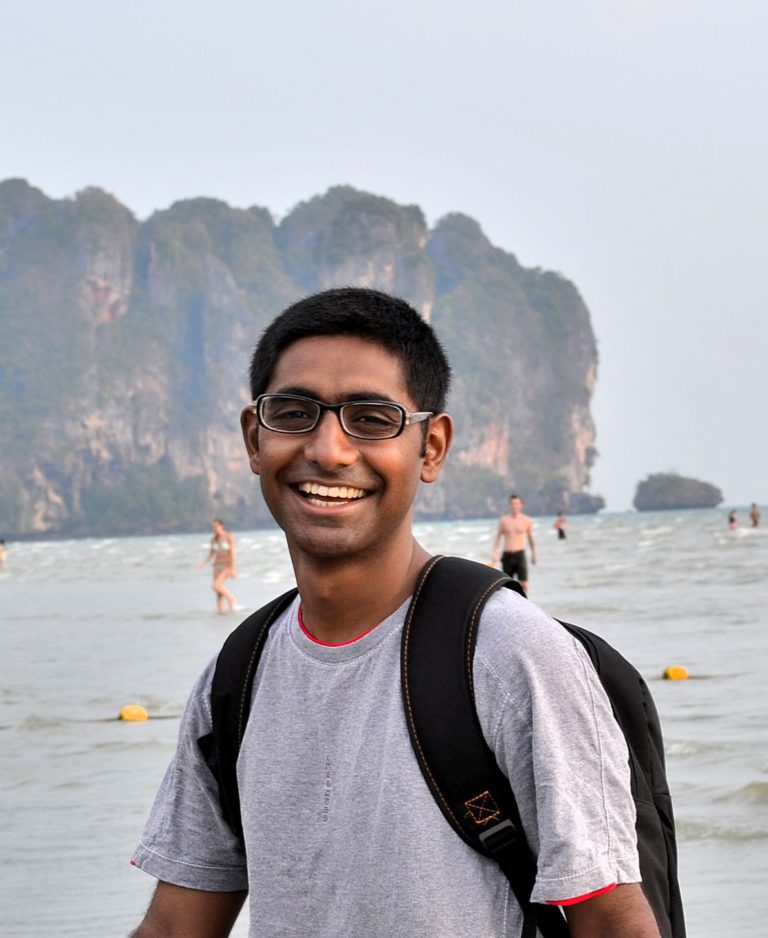
Postdoctoral Fellow
Department of People and Technology,
Roskilde University, Copenhagen
prajakt123@gmail.com
Bio
I am a soon to graduate doctoral candidate at the Homi Bhabha Centre for Science Education, TIFR, Mumbai. My doctoral research is guided by the distributed and embodied cognition perspectives, and broadly focuses on understanding how people 'imagine' scientific and mathematical entities and phenomena using multiple external representations (such as equations, graphs, diagrams). I am involved in the design, development and testing of embodied modes of learning science and mathematics (such as fully manipulable simulation interfaces) through external representations, these interfaces are also used as 'probes into the mind'. In my investigations, I use qualitative interviewing, as well as interaction (e. g. eye and mouse) tracking technologies in order to capture students' behaviour while they interact with the simulation interfaces. This research follows a version of design-based research model, which is a methodology characterised by multiple iterations of designing and and testing of educational interventions.
Research Areas
learning, imagination/simulation, multiple representations, distributed cognition, embodied cognition, eye tracking
Projects
- Representational Competence in Chemistry
- The enactive equation
- Eye to I: Recognizing own eye movements
Publications
- Pande, P., & Chandrasekharan, S. (2016): Representational competence: towards a distributed and embodied cognition account, Studies in Science Education, 53 (1), 1-43. UK:Routledge. DOI: 10.1080/03057267.2017.1248627
- Pande, P., & Sevian, H. (2016). Switching Between Probabilistic and Deterministic Mental Models of Molecular Dynamics: A Case of Conceptual Fluency, In Looi, C, Polman, J., Cress, U., & Reimann, P., (Eds.), Proceedings of 12th International Conference of the Learning Sciences (2), 898-901, NIE: Singapore.
- Chandrasekharan, S., Date, G., Pande, P., Rahman, J., Shaikh, R., Srivastava, A., Srivastava, N., & Agarwal, H., (2015). Eye to I: Males Recognize Own Eye Movements, Females Inhibit Recognition, In Noelle, D. C., Dale, R., Warlaumont, A. S., Yoshimi, J., Matlock, T., Jennings, C. D., & Maglio, P. P. (Eds.), Proceedings of the 37th Annual Meeting of the Cognitive Science Society, 327-332, Austin, TX: Cognitive Science Society.
- Pande, P., Shah, P. & Chandrasekharan, S. (2015). How do experts and novices navigate chemistry representations – an eye tracking investigation, In S. Chandrasekharan, S. Murthy, G. Banarjee, & A. Muralidhar (Eds.), Proceedings of EPISTEME-6, 102-109, HBCSE-TIFR, Mumbai, India.
- Pande, P., & Chandrasekharan, S. (2014) Categorization Of Multiple External Representations By Chemistry Undergrads: An Eye-Tracking Study, In Y.-J. Lee, N. T-L. Lim, K. S. Tan, H. E. Chu, P. Y. Lim, Y. H. Lim, & I. Tan (Eds.), Proceedings of the International Science Education Conference 2014, 1393-1415. NIE-Singapore.
- Pande, P., & Chandrasekharan, S. (2014) Integration of multiple external representations in chemistry: a requirements gathering study, In C.-C. Liu, Y. T. Wu, T. Supnithi, T. Kojiri, H. Ogata, S. C. Kong & A. Kashihara (Eds.). Proceedings of the 22nd International Conference on Computers in Education, 732-737. Japan: Asia-Pacific Society for Computers in Education.
- Kothiyal, A., Majumdar, R., Pande, P., Agarwal, H., Ranka, A., & Chandrasekharan, S. (2014) How Does Representational Competence Develop? Explorations Using a Fully Controllable Interface and Eye-tracking, In C.-C. Liu, Y. T. Wu, T. Supnithi, T. Kojiri, H. Ogata, S. C. Kong & A. Kashihara (Eds.). Proceedings of the 22nd International Conference on Computers in Education, 738-743. Japan: Asia-Pacific Society for Computers in Education.
- Pande, P., & Chandrasekharan, S. (2014) Eye-tracking in STEM education research: limitations, experiences and possible extensions, In Kinshuk & Murthy, S. (Eds.), Proceedings of The 6th IEEE International Conference on Technology for Education, 116-119. IEEE: Kerala.
- Majumdar, R., Kothiyal, A., Pande, P., Agarwal, H., Ranka, A., Murthy, S., & Chandrasekharan, S. (2014) The enactive equation: exploring how multiple external representations are integrated, using a fully controllable interface and eye-tracking, In Kinshuk & Murthy, S. (Eds.), Proceedings of The 6th IEEE International Conference on Technology for Education, 233-240. IEEE: Kerala.
- Pande, P., & Ramadas, J. (2013). Students’ Measurement Experiences and Responses to Length Comparison, Seriation and Proportioning Tasks. In Nagarjuna G., Arvind Jamakhandi, and Ebie M. Sam (Eds.) Proceedings of epiSTEME-5, 145-151. HBCSE, TIFR: Mumbai
- Pande Prajakt, Yadav Jay Kant, N. Chandini & Chauhan Jyoti Bala (2010) “Counteraction of sucrose-ethanol induced aggregation of protein” Protein and Peptide Letters, Volume 17, Number 12, December 2010, 1542-1546(5).
Posters presented
- Pande, P., Shah, P. & Chandrasekharan, S. (2015). Experts and novices navigating chemistry representations – an eye tracking investigation, a poster presented at Chemistry Education Research & Practice Gordon Research Conference, Bates College, Lewiston, ME, USA.
- Pande, P., Majumdar, R., Kothiyal, A., Agarwal, H., Ranka, A., Murthy, S., & Chandrasekharan, S. (2014) The enactive equation, a poster presented at Visualization in Science & Education Gordon Research Conference, Bates College, Lewiston, ME, USA.
